
Stability is one of the most important factors – if not the most important factor – in selecting the head fixation for two-photon imaging and electrophysiological recordings in awake mice. The clamp and head plate design play an important role in ensuring stability. Because of this, we continuously innovate the clamp design and expand the variety of clamp options.
Please use the menu below to navigate to the relevant clamp option:
- Comparison between two main clamp options
- Standard clamp
- Levelt clamp (magnetic)
- fUS clamp (for Iconeus One system)
Comparison between two main clamp options
One clamp is included with every Mobile HomeCage system. Remember to specify your clamp preference when you place an order. The two most common options are the standard clamp (top picture, left) and the Levelt clamp (top picture, right). While both clamps provide the same level of stability, they differ in several respects. The table below provides a quick reference guide to choosing between the two options:
| Features | Standard clamp | Levelt clamp |
|---|---|---|
| Fixation mechanism | Mechanical (alligator clip) | Magnetic |
| Head plate selection | 12 models | (currently) only one model |
| Time to head-fix or release a mouse | <10 seconds | <2 seconds |
| Displacement during imaging | 1.2 - 1.5 μm (in cortical layers) | 1.2 - 1.5 μm (in cortical layers) |
| Compatibility with ephys recordings | Yes | Yes |
| Compatibility with Neurotar's magnetic tracking | Yes | Yes* |
| Compatibility with Neurotar's lick port and air puff | Yes | Yes |
| Tilted clamp options | 0, 10, 20, 30, 35 degrees | 0 degrees |
| Rotation | 40 degrees in each direction (10 degree steps) | 40 degrees in each direction (10 degree steps) |
| Elongated clamp version (+20 mm) | Yes | Yes |
*) The clamp does not interfere with locomotion tracking. However, we do not recommend leaving a mouse with a magnetic head plate in the cage without fixing its head in the clamp (for example, during handling, or before or after head fixation). If a loose mouse tilts its head, the magnets in the cage’s bottom (or tracking mat) may pull on the mouse’s head. This will not cause injury, but it may cause unnecessary stress.
Standard clamp
The standard clamp is basically an alligator clip secured with two thumbscrews. For this clamp, we offer a wide selection of head plates that satisfy different research needs. The clamp rotates up to 40 degrees in each direction (left and right) either as a continuum or in 10-degree steps. Besides that, the clamp has attachment holes for mounting liquid reward, miniature cameras, and other auxiliary devices.
The gif below illustrates imaging stability in the brain of an awake mouse expressing GCaMP6. Please note that the image sequence is not motion-corrected:
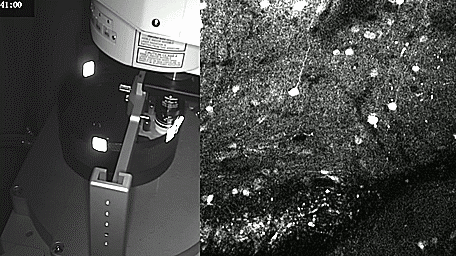
Tilted clamp

The tilted clamp is a variant of the standard clamp. It allows adjusting the mouse’s head position in the nodding direction. Remember that the tilted clamp cannot be used for imaging without a tilting objective mount. Please specify the degree of tilt at the order. The straight clamp (0-degree tilt) is a default option. Other options include a 10, 20, 30, and 35-degree tilt. The degree of tilt is pre-set and cannot be adjusted.
The Levelt clamp
The Levelt clamp was developed by Christiaan Levelt’s lab at the Netherlands Institute for Neuroscience. The clamp is magnetic. It allows head-fixing a mouse quickly and effortlessly. Currently, the only head plate available for this clamp is the magnetic head plate (# 13). There is no tilted version for the Levelt clamp. The clamp rotates up to 40 degrees in both directions (left and right) either as a continuum in 10-degree steps. Besides that, the clamp has attachment holes for mounting liquid reward, miniature cameras, and other auxiliary devices.
The Levelt clamp is suitable for imaging/recording in the somatosensory cortex of adult mice (age > 2 months; weight > 20g). The gif below illustrates imaging stability (of the dendritic spines) in awake behaving mice. Please note that the image sequence is not motion-corrected:
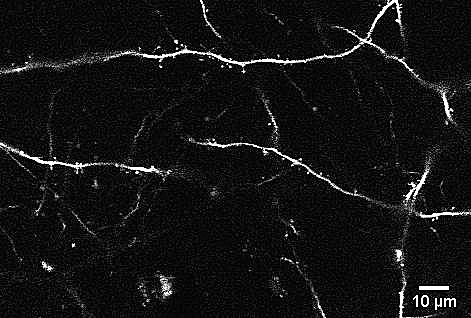
The pictures of the standard viz-a-viz the Levelt clamp (below) are taken from roughly the same angles to illustrate the mouse’s field of view in each clamp. We took the pictures in the extra low-wall cage for demonstration purposes:
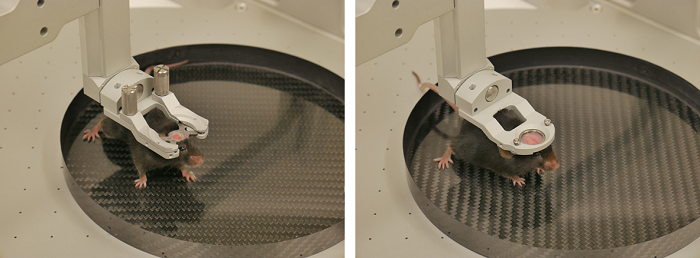
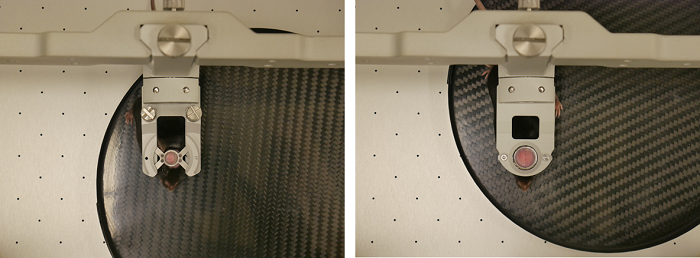
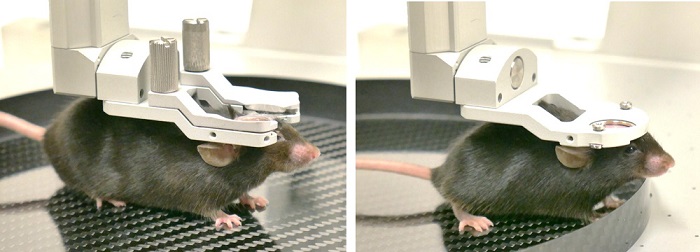
fUS clamp
Interested in functional ultrasound (fUS) imaging in awake behaving mice using the Iconeus One system? We have a special fUS clamp for you!

The central opening is larger than in the standard clamp. This is necessary to accommodate the fUS head plate (# 14). Both the clamp and the head plate ensure the optimal fit with Iconeus’ fUS imaging probe.
Next to functional ultrasound, the fUS clamp is also suitable for 2-photon imaging of deep brain areas through a large-diameter objective. This application requires long-blade head plates (#15 & #16).
Elongated clamp options
If you are using a wide-diameter objective or if the horizontal space is limited in your imaging setup, we recommend using the elongated clamp versions available for the standard and the Levelt clamps. The clamp’s horizontal footprint is extended by 20 mm.
If you need help selecting an optimal clamp for your Mobile HomeCage system, or if you are already using our equipment and want to purchase additional clamps, please contact our support.